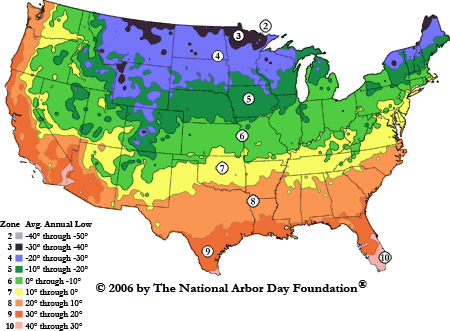 |
| Source: Viable Herbal Solutions |
Theobroma cacao is the source of all this fuss. It's name literally means fruit of the gods, and fruit of the gods it is. This relatively short (15-26 feet) tree can produce up to 20 cocoa pods. Each pod will contain anywhere from 30-60 beans inside. It takes about 10 pods to produce 2.2 pounds of chocolate paste. Just to give you a little taste of how low that yeild is consider that the world consumed about 3.5 million tons ( of cacao product from 2003-2004. That's seven billion (7 000 000 000) pounds if I did all that math correctly! That's a lot of zeros, folks.
Alright, I'll get off my soap box of cacao amazingness and get to the botanical facts here. Cacao can NOT be grown outdoors in areas where temperatures drop below 55 degrees for a prolonged period of time. Generally they'll grow best in hot and humid environments that receive regular precipitation (or a greenhouse!). That typically confines them to USDA climate zones of 11+. As you can see below the U.S. unfortunately does not make the cut.
 |
source: arborday.org |
There are three general varieties of cacao: criollo, forastero and trinitario. Criollo cacaos are regarded as the highest quality of cocoa-producers but are difficult to grow due to their increased susceptibility to disease. Forastero cacaos are the most productive of the three. All cacao is susceptible to disease and it is estimated that 30% of the global yield may be lost yearly to fungal disease. I can tell you from my own experience that this is true. They are very sensitive and because it needs to be hot and humid for them fungus can become a problem. I usually just spray it with some anti-fungal spray before it gets anywhere.
 |
| cocoa pod photo ©Robyn Lee on Flickr |
For more information on cocoa production and propagation please visit the Internation Cocoa Organization's website. I will follow with more posts and updates about the cacao and how to grow it. This is just an introduction.
My additional sources:
Trade Winds Fruit
Montoso Gardens
University of Louisiana
Wikipedia

No comments:
Post a Comment